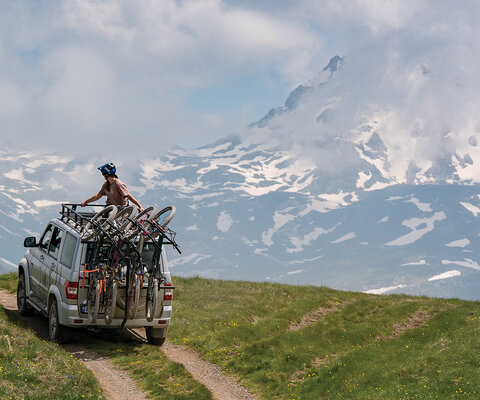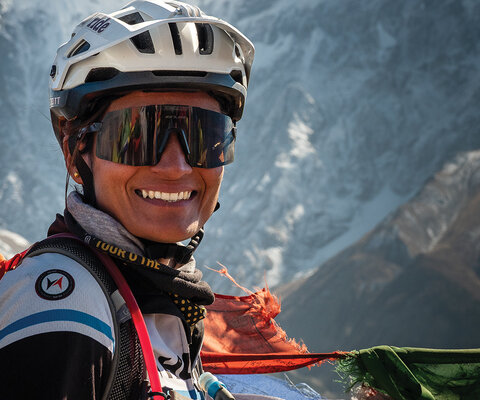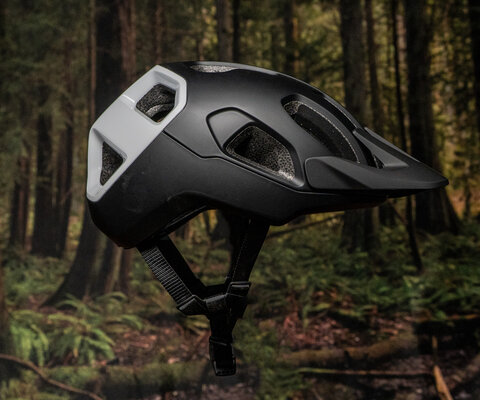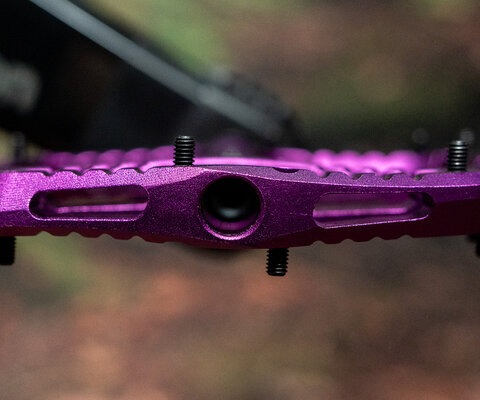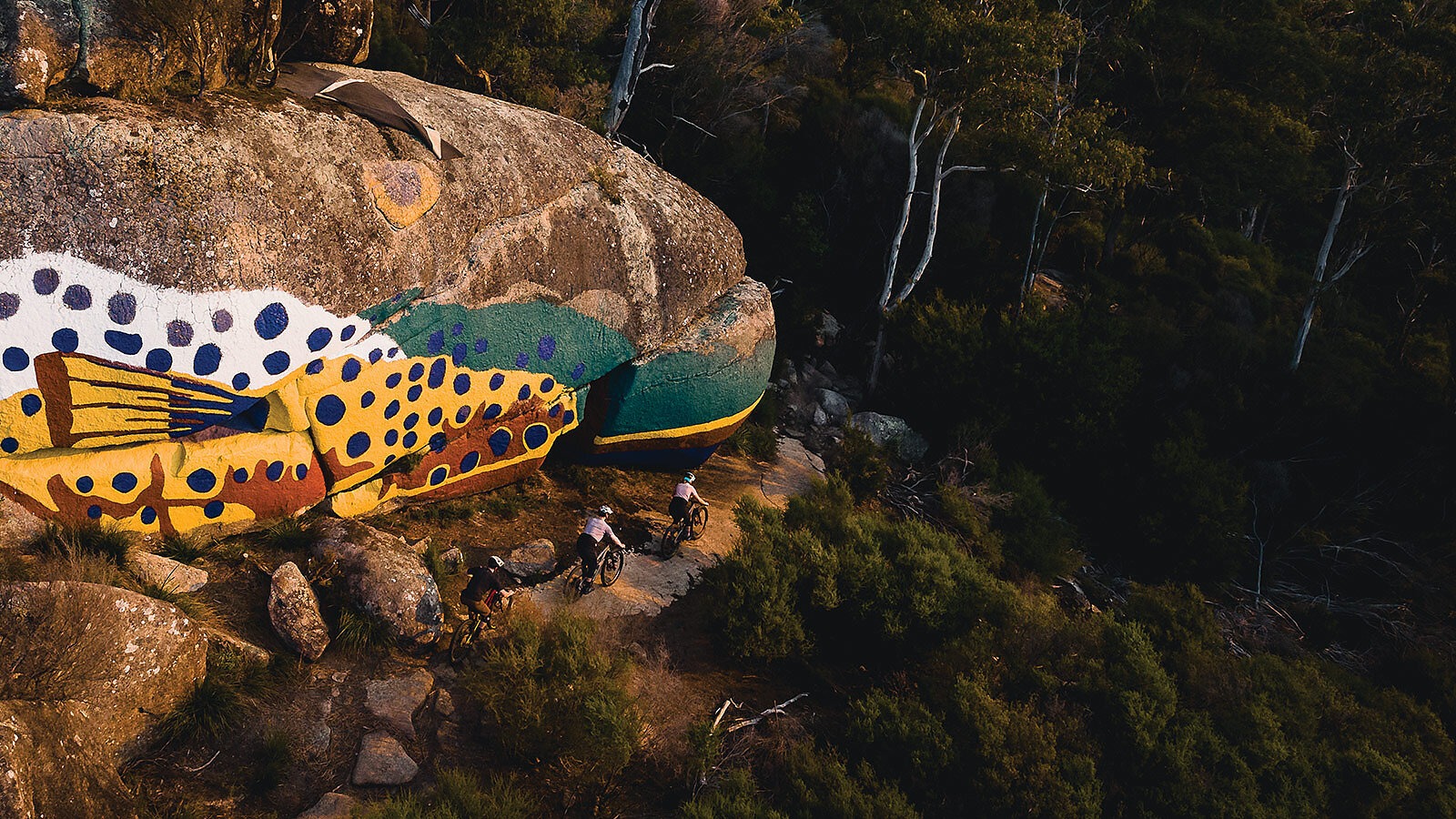
Below Down Under Mountain Biking Takes Hold in Tasmania
Words and Photos by Cameron Mackenzie
It’s the state Australia forgot: a small island sitting far off the southernmost point of the mainland, exposed and truly wild. It’s a land of immense wilderness, rugged landscapes, and pristine coastlines—a place where trees grow to 100 meters tall and a home to many indigenous plants and animals that don’t exist anywhere else in the world.
Once part of the supercontinent Gondwana, Tasmania is a time capsule of a prehistoric wonderland. The southern hemisphere’s last temperate rainforest exists here, serving as a reminder of the dense growth that once covered lands in this far-flung part of the globe. Although she’s often the blip left off of maps, this space has allowed Tasmania to—culturally and environmentally— evolve without much interference.
Take a step away from the glare of the golden sands, look beneath the towering trees, and you’ll find undisturbed forest floors crawling with wildlife and now, an increasing number of mountain bikers. For observers of mountain bike culture, it would be easy to sit back and assume that Tasmania’s singletrack renown is a by-product of publicity gained from hosting events such as the Enduro World Series. In reality, this island state of Australia has been building its scene for decades through a mix of meticulous planning, tireless work by key community members, and advice from a few trusted consultants with a gift for convincing government officials to take a chance.
Many riders are first introduced to modern Tassie mountain biking by way of Derby, a small, once-forgotten mining town tucked far up in the northeastern reaches of the island. However, core, local trailbuilders were working to convince councils and state government to invest in proper infrastructure a few of decades before Derby stepped into the international spotlight.
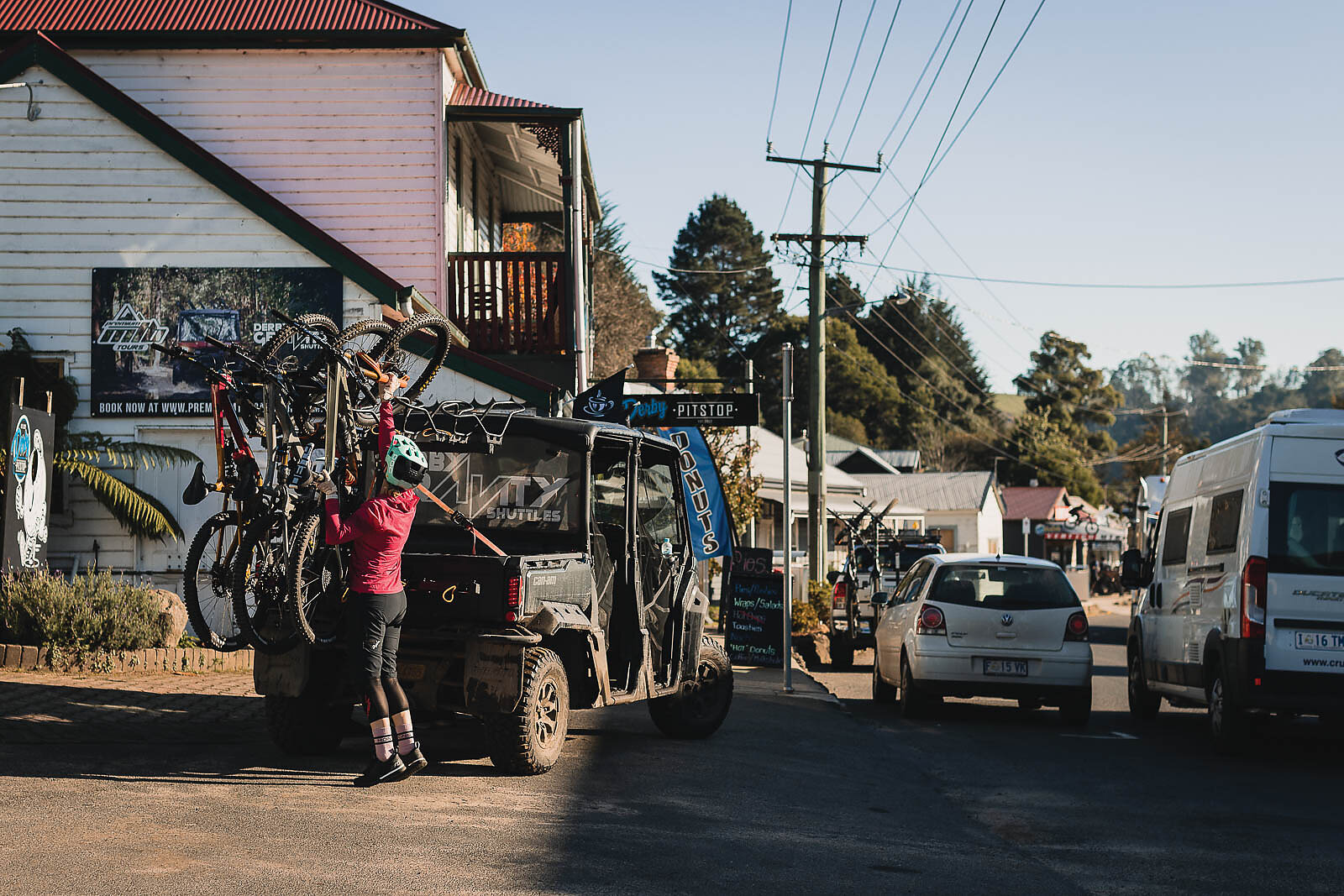
Convincing the local council to do something radically different than what they’d originally planned was hard, and it required everyone to take a chance.
During the early 1990s, the riding scene was very much underground. Most trails were community-built and centered heavily around Hobart, Tasmania’s largest city. Tucked in a basin by the sea and sitting in the shadow of Mount Wellington, Hobart lends itself naturally to mountain biking—access was easy, topography suitable, and much of what was built finished right back in town. For those living locally or paying close attention, the potential of Tasmania was on full display.
Slowly, the sport caught on and grew. Simon French, now one of the key figures in Tasmania’s mountain bike success story, grew up riding and digging in Hobart and later played an instrumental role in sparking future trail developments.
“Glenorchy Bike Park was the first official development in Hobart,” French said. “[That was] followed closely by the North-South trail up on Mount Wellington.”
The development of infrastructure put Tasmania on the map and ushered in several years of hosting the Australian Mountain Bike National Championships. In 2008, French founded Dirt Art, his trailbuilding and consulting company, which began working with the Tasmanian government on creating its first state mountain bike strategy plan alongside another company, Inspiring Place. That basic framework—still often referenced today—is a big part of what set things in motion.
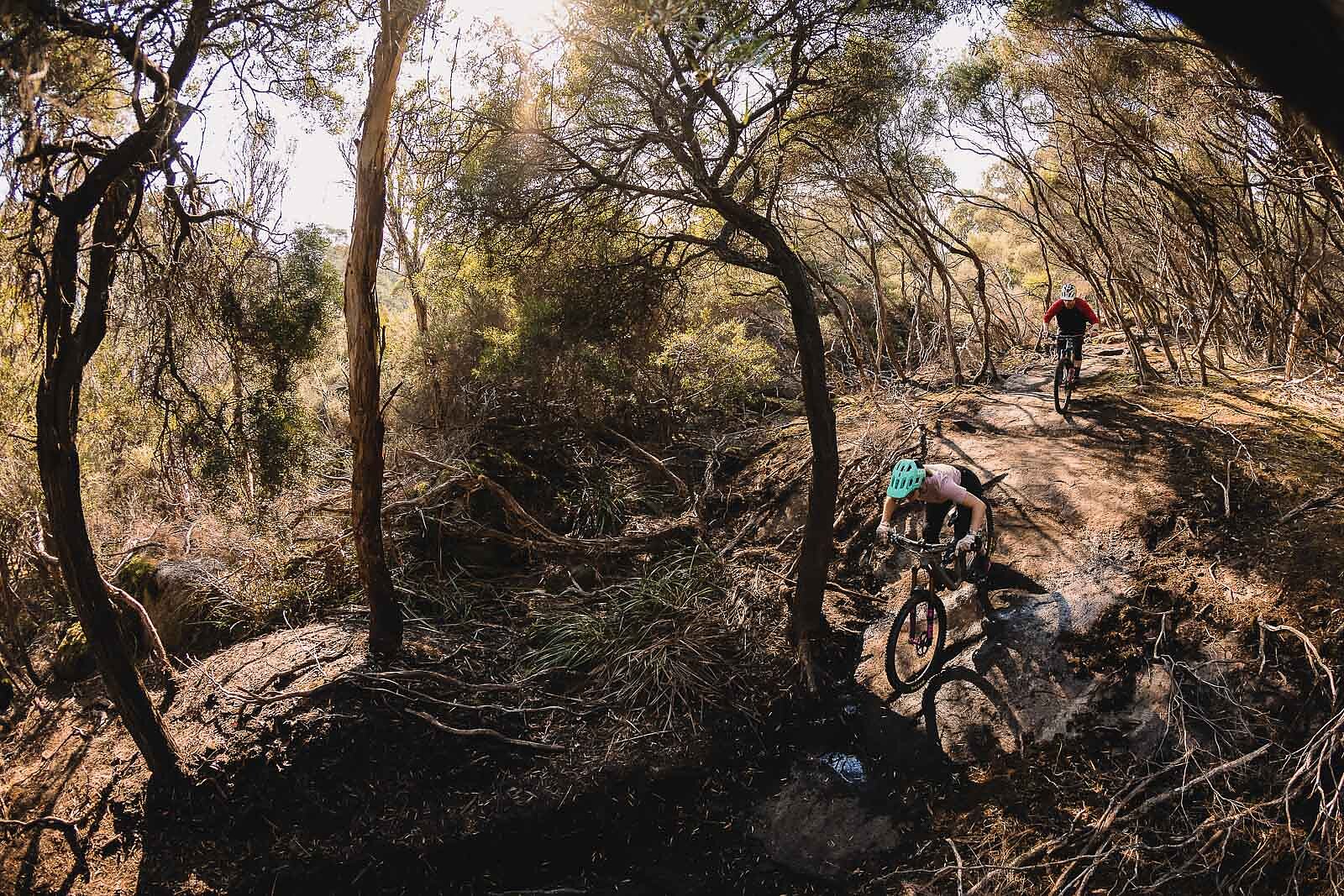

French wasn’t the only advocate working to make mountain biking mainstream in Tasmania. Glen Jacobs, an Australian mountain bike pioneer and director of World Trail, was there to offer his expertise; in 2006, he was brought in to assist in the greater Hobart region after the Tasmanian government set aside funds for new mountain bike trails. Many of these developments, Jacobs remembers, were focused on creating small bike parks without a lot of consideration given to their location or sustainability.
“Back then, a lot of trail development was either volunteer, or, where there was government input, it was focused around World Cup type events,” Jacobs said. “[It was] spending on trails for the sake of the events, and so forth.”
In the years after some of his early jobs— Glenorchy or the Armidale 4X course in New South Wales, for example—Jacobs and his team really began to hit their stride. World Trail refined its craft, developing design systems and an ethos centered around usability, sustainability, and long-term economic impact. So, when the phone rang asking for help in Derby, World Trail came with a clear view on trail towns and how to best create something impactful. That call came in the early 2010s and, by that point, there were many “spot fires” emerging across Australia—small areas of concentrated trailbuilding efforts with dedicated riding communities all creating their own little scenes, often in areas far away from any real infrastructure.
At the time, there was little tourism in northeastern Tasmania other than a flashy golf course and a few good surf breaks. But a local trail advocacy group knew the potential and worked with a group of stakeholders to access funding through the federal government’s Regional Development Australia Fund, successfully securing $2.45 million Australian dollars.
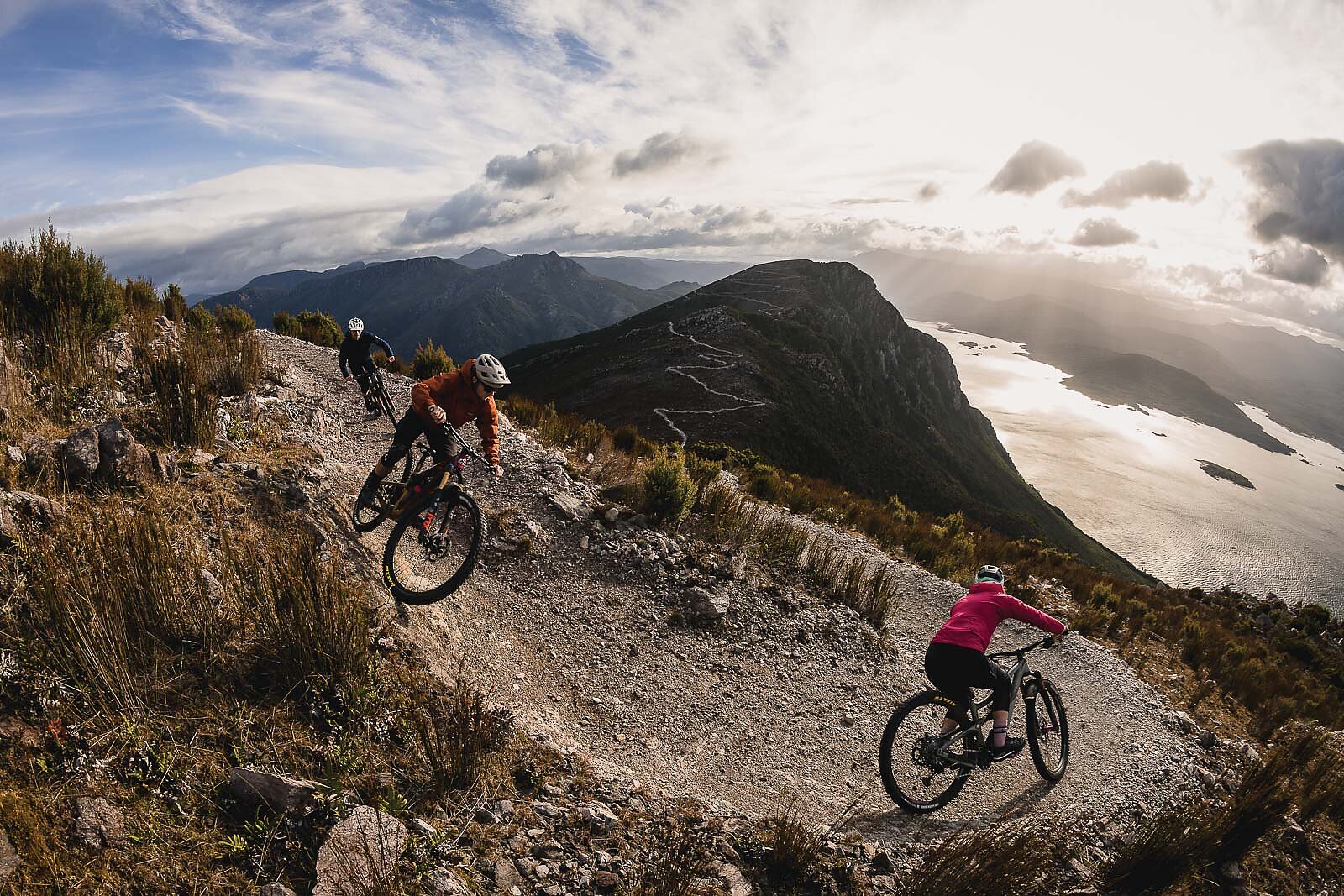
When World Trail came through the area to scout, they drove through Derby and had to stop. It was clear that this was where they needed to focus their effort.
“It’s a full town with services, accommodation, and hills in every direction,” Jacobs said, recalling the visit. “It just needed the keys turned back on ... None of the original ideas were bad— they lacked direction. It would be like going to McDonald’s and getting your patty and buns but needing to drive 20 kilometers down the road to get the tomatoes and Coke.”
Convincing the local council to do something radically different than what they’d originally planned was hard, and it required everyone to take a chance. World Trail, led by Jacobs, alongside locals who shared their vision, eventually succeeded in making the case that Derby would benefit from a well-built, easily accessible network of bike-specific trails.
In March and April of 2023, Derby hosted its third Enduro World Series event, selling out the town, packing rental units, and cementing Tasmania as the home of Australian mountain biking. Nowadays, the township has more than 60 Airbnbs, five bike shops—all open at least six days a week—and four different shuttle operations. About half of the town’s full-time population of a few hundred people are now employed by businesses that directly cater to mountain bikers. Housing prices, as a result, have skyrocketed by a factor of 10 in a single decade. Jacobs cites figures like this, along with trail counters and hospitality revenue, when making the case for new trail development. It helps, but it’s not the full story.
“People think it’s as easy as ticking the boxes, finding a few bucks, and you’ll be away,” Jacobs said. “There’s a lot more to it than that.”
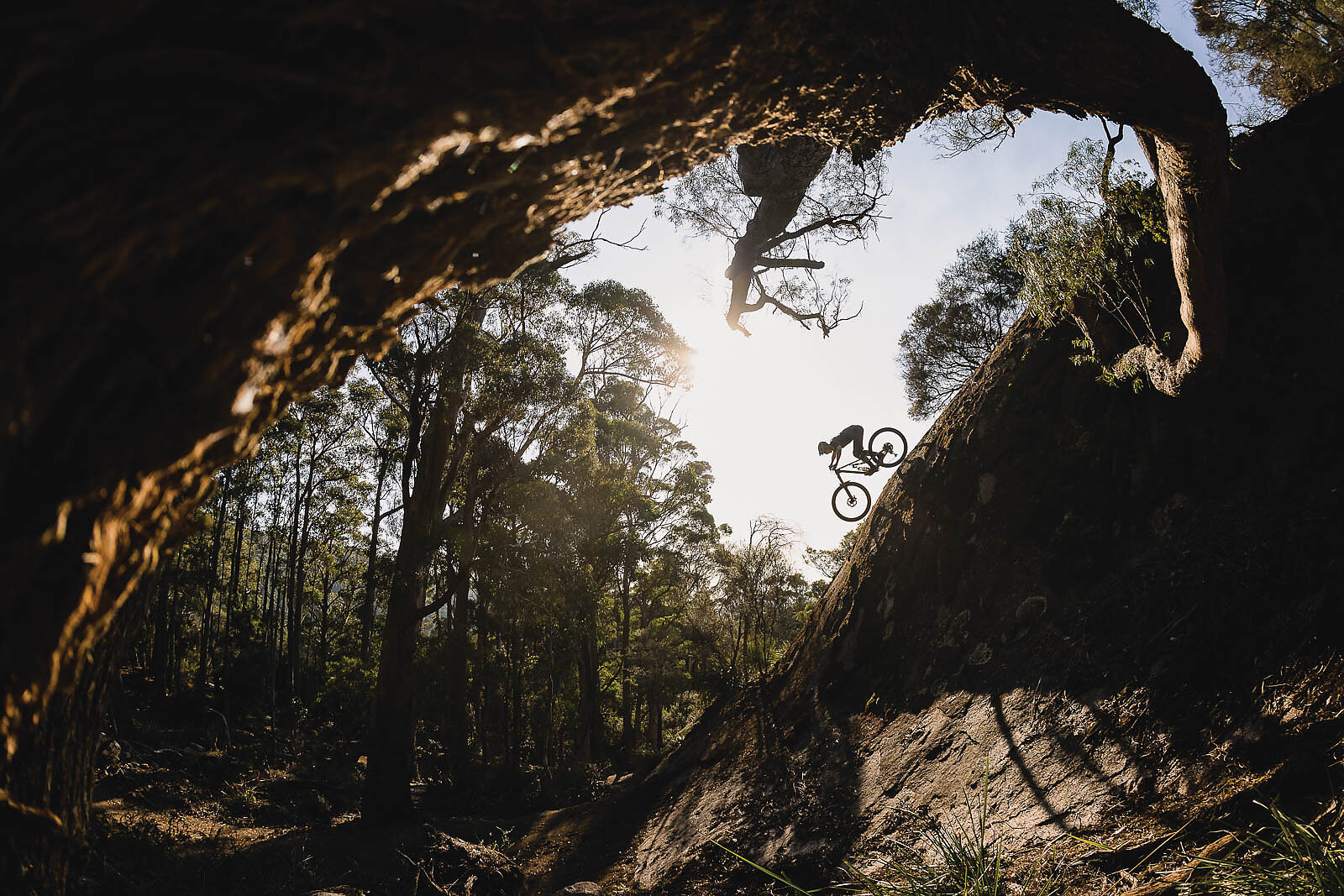
While much of the government’s efforts were focused on Derby, French was working away quietly to dust off old plans for a bike park deep in the Derwent Valley of south-central Tasmania. There, French was interested in Maydena, an old forestry town tucked away amongst ancient old growth. There were funding hiccups at first, but by 2013, a deal had been worked out to lease the site and, in the ensuing years, the early stages of constructing the Maydena Bike Park took shape.
“Over a period of about three years, we worked through the process,” French said. “We ended up signing leases and things in early 2017, got our development approvals around that September and basically started building from there, targeting a January 2018 opening.”
At this point, Derby was on its way to fame; it was well established having hosted Australia’s first Enduro World Series and was in its second phase of development that entailed another $3.1 million Australian dollars of funding ($2.5 million federal, $600,000 state). While welcome news for most, the focus on Derby meant the Maydena project was left to fend for itself. To finish the project, a significant private invest would be required.
“We were 18 months in and had 35 kilometers of trail before we received any funding. In terms of the overall investment, we had $800,000 for our second stage of development,” French said. “So, after we’d open the first 35 kilometers, the state government co-funded the next stage with us—they put $800,000 to that. And then, more recently about a year ago [2022], we got a $250,000 tourism investment to help with the next stages in our plan—walking trails and infrastructure.”
Real estate prices shot up almost overnight. French estimates a typical house in Maydena cost between $40,000 and $60,000 when the bike park project first started, then increased to around $150,000 when formal plans were announced. Now, six years later and with the Maydena Bike Park in full swing, houses go for closer to $400,000 Australian dollars.

By 2018, it was clear that cycling tourism could be a major economic driver across Tasmania and the next round of funding reflected that, with the labor government committing $4 million to a statewide trails and community grants program, on top of $6 million set aside for cycling tourism in Tasmania through the Department of State Growth just the year before. Having heard of its success, small townships across the state wanted in on the “Derby Effect.” Mountain biking was gaining momentum on this small island at the far southern reaches of the globe.
Early economic reports were suggesting visitors in Derby were spending, on average, an extra four or five nights in northeastern Tasmania, so it was only natural that nearby councils invested to try and capture some of that tourism market— valued at close to $30 million annually.
The Break O’Day Council in Saint Helens was one of the first in the area to get on board with the new wave of mountain biking and turned to World Trail to help create its own trail center. Today, that network consists of more than 60 kilometers of trails near the edge of the sea overlooking its infamous surf breaks, white sand shores, and red rock. The Bay of Fires trail is its jewel, enticing riders over the hill from Derby and connecting to the ocean in a 40-kilometer epic through mountainous terrain.
Shortly following, West Coast Council engaged Dirt Art for development, though Tasmania’s west coast offered its own unique set of challenges. There, the island serves as the breaker for severe weather coming in off the ocean; the full forces of the Roaring Forties winds hit it straight on and some areas receive more than 3 meters (118 inches) of rain annually. Decades of hard mining and centuries of erosion have stripped parts of the land down to bedrock. Building trails here seems illogical. That is, until a visit reveals the way trailbuilders have been able to incorporate the rocky terrain and romance of the remote setting directly into the singletrack.
Unlike more established riding destinations in Tasmania, most of the offerings out west are standalone trails—epics through untouched wilderness or clusters of small trails situated near remote townships. No single place has the “big package” pull of areas to the east, but a smattering of trails up and down the coast have created a destination in and of itself. For mountain bikers looking for a more solitary experience, the distance is part of the appeal.
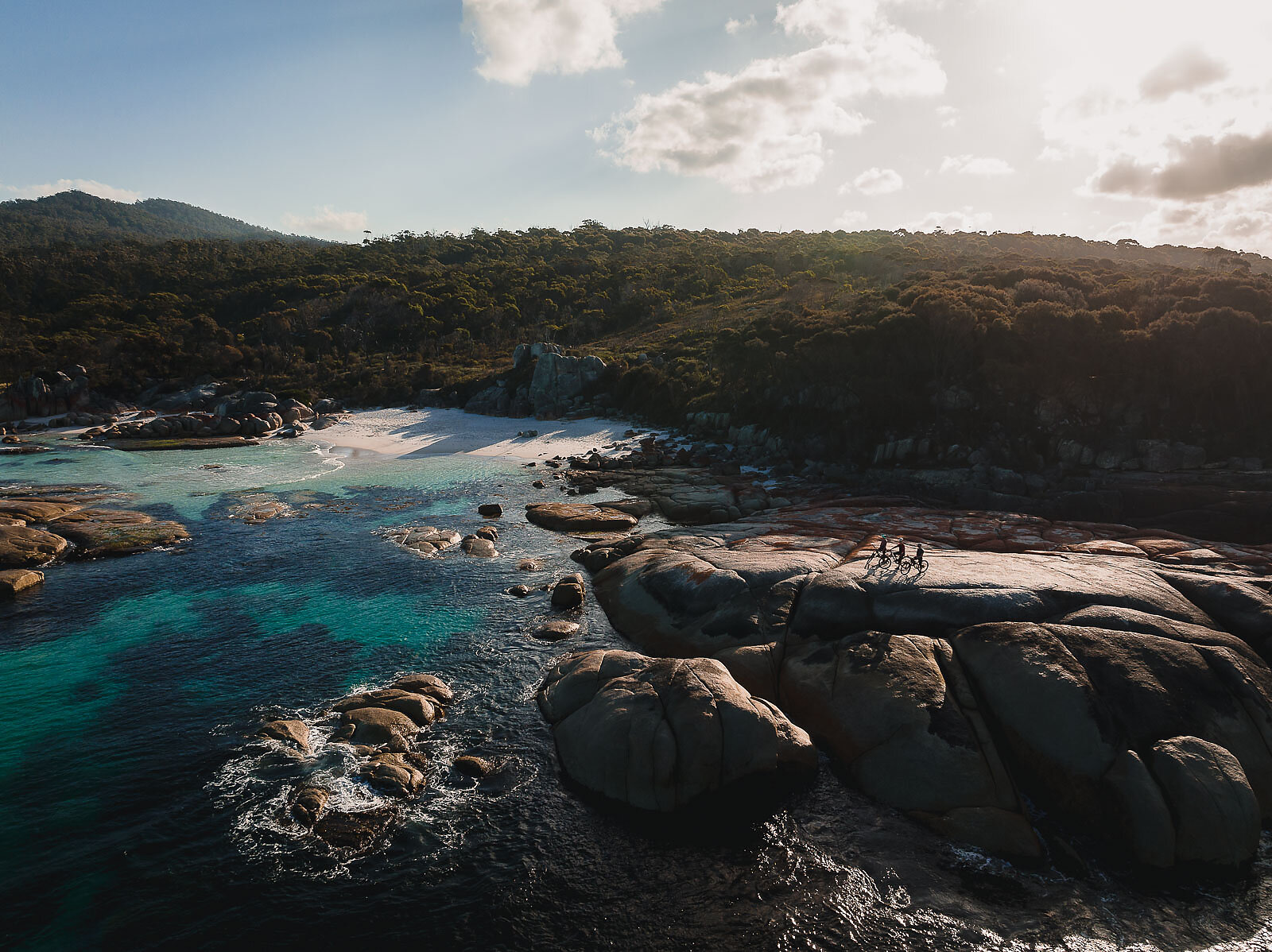
Investment from state and federal governments in recreational tourism and cycling infrastructure in Tasmania has taken it from a land of small, scattered clusters of user-built trails to a world-leader in how to smoothly integrate mountain biking into the development of a town.
In Maydena, the next five years are already mapped out and involve an intended $30 million investment to ensure they retain their reputation as a market-leading mountain bike destination. The plan looks at bringing further international events across all gravity disciplines, trail expansions, and exploring the feasibility of chairlifts.
French and his team have found a way to package what they’ve done in Maydena and offer that to prospective parties across the rest of Australia—from design and build, through to the management plans and structures—with Elevation Parks.
In Derby, the newly formed Blue Derby Foundation is focused on making sure its region’s trail boom is sustainable and not completely reliant on grant cycles for funding. Its biggest success so far is the creation of an accommodation booking system that helps keep the administrative fees collected in Derby flowing straight back into the local trails.
Finding innovative solutions like this will be the next challenge for Tasmanian mountain biking. Long-term viability depends on the collective partnership of local riders, supporters of recreation working within government, and professional builders on the ground. In that sense, the future of Tassie riding isn’t too different from its beginning.
